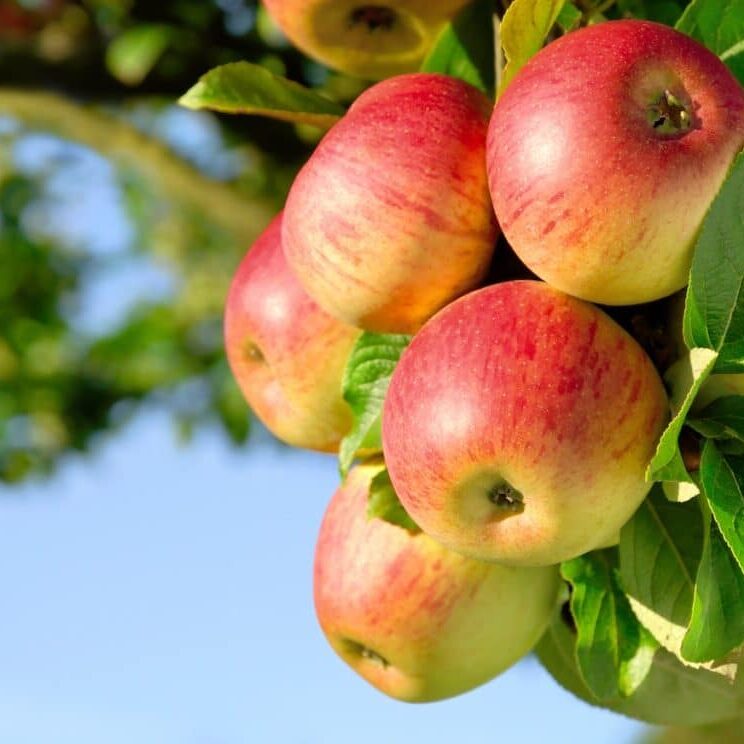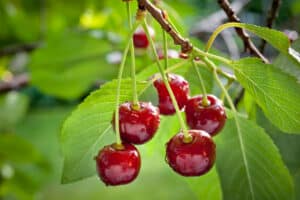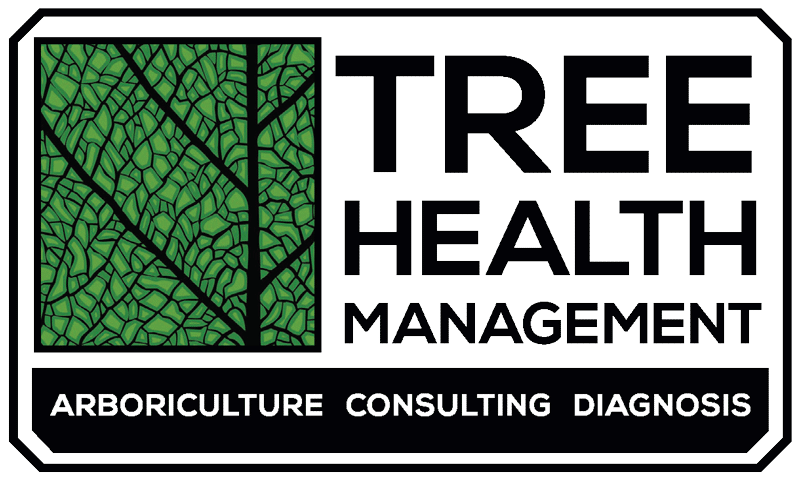Blog | Tree Care | Tree Planting
Fruit Trees for Southern Wisconsin

Growing your own fruit can be a rewarding experience. It can bring you perspective on the relationship between our food, the earth, and climate. Picture the fresh fruit, pies, crisps, jams, and jellies you can create for you and your loved ones. Growing certain fruits in northern climates can be a challenge. The harsh winters and late spring frosts affect the quantity and quality of crops. To help with this challenge, you can find rootstocks that help with winter hardiness or produce dwarfed varieties if you have limited space. Plant in sites with ample space that are protected from strong winds, and avoid “frost pockets”, which commonly occur in valleys or at the bottoms of slopes. Even with the perfect location, you won’t find success with just any fruit tree.
In southern Wisconsin, the fruit that grows most successfully is apple (Malus). There are a wide variety of colors, textures and flavors available to WI growers. Apple flowers are self-unfruitful, meaning you need at least two different apple cultivars to pollinate each other. Some Crabapple trees will suffice as pollen sources for fruit set. Check that they flower at the same time to ensure pollination. Some trees may have multiple cultivars grafted onto a single rootstock to produce different varieties on the same tree.
Start pruning your apple trees when young to have a low, strong branching structure. Strong branches will be able to hold the weight of the fruit, and you will be able to reach the fruit if the branches are low. It’s possible to grow apples in small spaces when using espalier pruning techniques. More information about pruning and training apple trees is available in “Growing Apples in Wisconsin” from the UW-Extension. Apple scab is the most serious apple disease in the region. Consider picking an apple that is resistant. There is a long list of apple cultivars that grow well in southern Wisconsin, including apples that are better for eating, or better for baking. Some common varieties include Cortland, Golden Delicious, McIntosh, Honeycrisp, Golden Sentinel, Gala, Royal Gala, Jonathan, and more.
Many varieties of pear (Pyrus) can also grow well in southern Wisconsin. Quince is commonly used at pear rootstock, but is not cold-hardy enough for Wisconsin, so check your rootstock when purchasing pears. Pears are picky about their location. Make sure to find a spot with adequate space and full sun exposure to ensure fruit set. Two different pear cultivars are needed to ensure pollination and fruit set. Pay attention to specific harvest times, since pears need to ripen after harvest. Fire blight is the most common disease issue in pears.
Good pear cultivars for southern Wisconsin include Bartlett, Trinity, Parker, Moonglow, and Chastity. Asian pear varieties are not considered winter hardy, but people have had some success growing them in more protected areas in the southern part of the state. Because of their mixed success rates, Asian pears are difficult to find in area nurseries.
Stone fruit trees (cherries, plums, and peaches) have shorter lifespans and are overall less winter hardy than pommes (apples and pears). Wisconsin growers may have more mixed success. Late spring frosts can kill the early-blooming flowers, thus ruining the crop for the whole year. Cultivar selection, proper watering and mulching, and pest management are they keys to success. Pick cultivars that have later bloom times and are winter hardy.
 Cherries signify summer and are a favorite fruit for many people. There are two main categories of cherries: sweet cherries and tart cherries. Overall, tart cherries are more winter hardy, produce more reliably, and do not require cross-pollination between cultivars. Sweet cherries often have more complex pollination needs and tend to bloom earlier in the Spring. There are a few sweet cherries that can produce fruit in Wisconsin, including Lapin, Mesabi, and Rainier. Tart cherry cultivars that grow well in the region include Montmorency, North Star, and Sweet Cherry Pie, which was developed here in Wisconsin. Consider netting your cherry trees to protect your crop from hungry birds.
Cherries signify summer and are a favorite fruit for many people. There are two main categories of cherries: sweet cherries and tart cherries. Overall, tart cherries are more winter hardy, produce more reliably, and do not require cross-pollination between cultivars. Sweet cherries often have more complex pollination needs and tend to bloom earlier in the Spring. There are a few sweet cherries that can produce fruit in Wisconsin, including Lapin, Mesabi, and Rainier. Tart cherry cultivars that grow well in the region include Montmorency, North Star, and Sweet Cherry Pie, which was developed here in Wisconsin. Consider netting your cherry trees to protect your crop from hungry birds.
Growing peaches is known to be challenging in cold climates, due to their early bloom periods being destroyed in spring frosts. If you plan to grow peaches in southern Wisconsin, be aware that crops may not come reliably every year. Peaches do not require cross-pollination, and one tree is sufficient to set fruit. While there are more cultivars that can grow here, we recommend growing either Contender, or Reliance, which were created to be winter hardy. These cultivars have shown to perform the best in southern Wisconsin.
If you are interested in growing plums, look for either blue European plums, or American hybrid plums. Myrobalan rootstock is the most winter hardy option for plums. Blue European plum cultivars do not require cross-pollination, but the American hybrid varieties do. Typically, either ‘Kaga’ or ‘Toka’ are used for pollination. The native American plum (Prunus americana) produces the most reliably. Though it’s not the most desirable fruit, it does still make great jams.
If you want to grow Apricots in Wisconsin, you may be out of luck. Most Apricots are not cold hardy enough for our climate and bloom too early in the spring to produce fruit. Growers of Apricots can expect a crop once or twice every five years. Because of this, finding Apricot trees in area nurseries is very rare.
